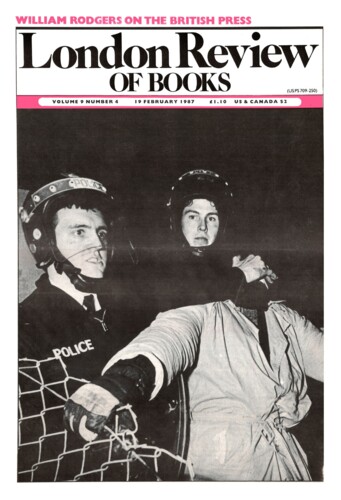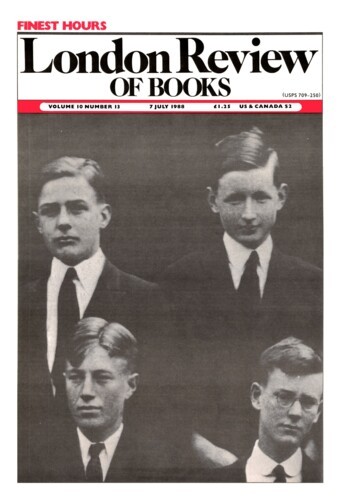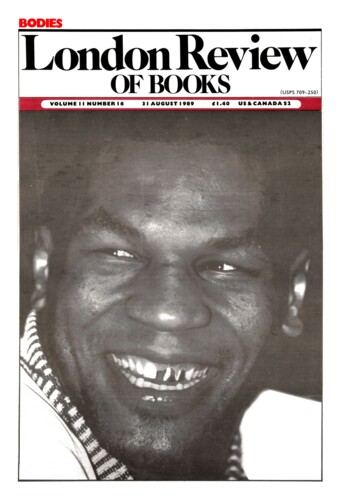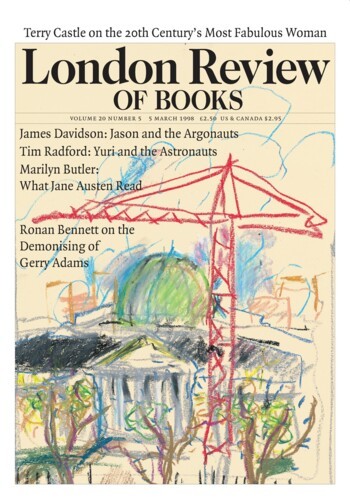F.M.L. Thompson looks at the long run of the English aristocracy
F.M.L. Thompson, 19 February 1987
As Britain chips away at her manufacturing base and slides towards becoming one vast open-air museum and tourist attraction, her aristocracy has emerged as the most dignified and venerable of museum pieces. Country houses are prized and revered as architectural gems, as art galleries and as period museums, and the frequently bizarre mixture of the excellent and the ordinary in their collections, or their downright second-rate quality, is successfully concealed by the adroit salesmanship which portrays all this in the full glory of its variety and eclecticism as a central part of the national heritage. ‘Heritage’ is, indeed, one of the vogue words of the Eighties, and in casting themselves for the role of its guardians the aristocrats have found a function which looks like being proof against unpopularity or redundancy. That many of them are today, in effect, beef barons, barley barons, property developers, art dealers, company directors and merchant bankers is beside the point: the prevailing image is of cultivated country gentlemen caring for priceless art treasures on behalf of the nation, keeping at bay the forces of vulgar and grasping materialism by the authority of impeccable manners and inherited good taste. Never mind that a display of cultural arrogance has always been the last refuge of groups and nations in decline, from ancient Greece to post-Napoleonic France and on to post-imperial Britain, a figleaf of civilisation trying to hide a loss of power. It remains true that for those able to play it the heritage card is a winner: the aristocracy is fortunate in finding itself on the receiving end of the national nostalgia trip and its idealisation of the country life.




